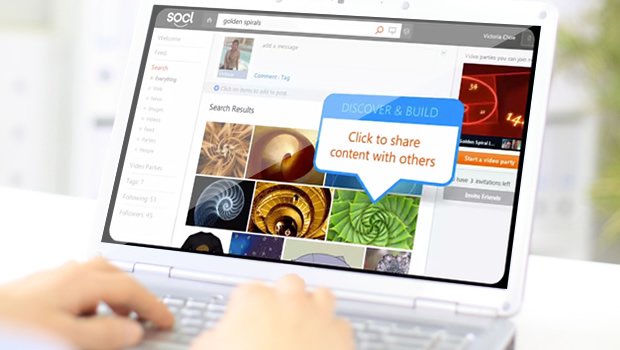Google Plus is making waves among technology savvy social networkers. Like so many other Google products, this one is in beta and is gradually opening up to more users.
One unique aspect separates Plus from other Google services. Unlike Facebook or Twitter where one accesses the ‘firehose’ of data that one subscribes to and is dependent on the Friends/Following, and where users mostly use features like groups/lists etc to sort out noise from the stream, Plus uses a different approach and lets users create ‘circles’ that allow them to separate streams. This is a more manageable approach for dealing with the humongous amount of incoming data that social networks generate.
When Google Plus started out, it was already ‘seeded’ with a large number of individuals who were already working on the concurrent development of the service. Since invitations were sent out from these accounts, the adoption of Plus propagated much faster through the web application/service development community. For now, it remains a geeky sort of place. As an early user, none of my ‘real’ social network peers were on it yet and it made me follow a large number of Google product engineering folks, developers from other companies, and technology journalists and yes, I also follow Mark Zuckerberg, who it seems is the most ‘followed’ person on Plus right now. Ironic that. The early user group was so technology driven and because of that, they were able to offer large amounts of bug reporting and constructive feedback to Google about the evolving feature set. It was great to see how Google’s engineers solicited feedback, which they got almost instantaneously and were able to act on it quickly. This interaction made it quite clear that Google was responsive to the limited user groups suggestions.
With individuals like Vic Gundotra and other senior engineering staff starting ‘hangouts’ (essentially video conference forums open to anyone who happens to be around at the time) users got a unique opportunity to interact with some superb engineering talent. I’m quite sure the engineers also benefit tremendously from such interaction with end-users, which would otherwise not have been possible. It led me to wonder about the evolving nature of such web services and applications. For perhaps the first time in the history of design, a large groups of users can influence the shape/form of a service they use. While designers always consider the user of a product/service, the scope/scale of interaction with users possible now was unheard of just a decade ago. Back then, as is now, designers depend a lot on ‘research’ to make design decisions. But I’m digressing, so without ever intending to learn from using Plus, I ended up learning several things mostly around:
- Insights into how Google’s engineering folk think about web service/application development.
- Observing the evolution of a web application’s feature set and the implications of the change for the user community.
- Seeing Google’s responses to opinions within the user community and how they prioritized requests was interesting to watch too.
It’s quite clear to me now how social networks could influence learning by:
- Providing a digital space for free expression about the work and workplace
- Creating a forum for interaction around the knowledge expressed
- Providing a sense of community and common purpose
- Providing the ability to observe and participate in tasks with other more experienced individuals
- Creating an environment where feedback is quick, almost in real-time, and could come from disparate parts of the networks, this offers users unique perspectives
- Providing a system that encourages and rewards discovery and contribution, and where emergence clearly marks important/linchpin users or important content
- Encouraging moments of serendipitous learning, or rather, providing a digital space for such learning serendipity to grow and thrive
Now if only organizations understood that such networks could be critical to learning and in turn survival.



















